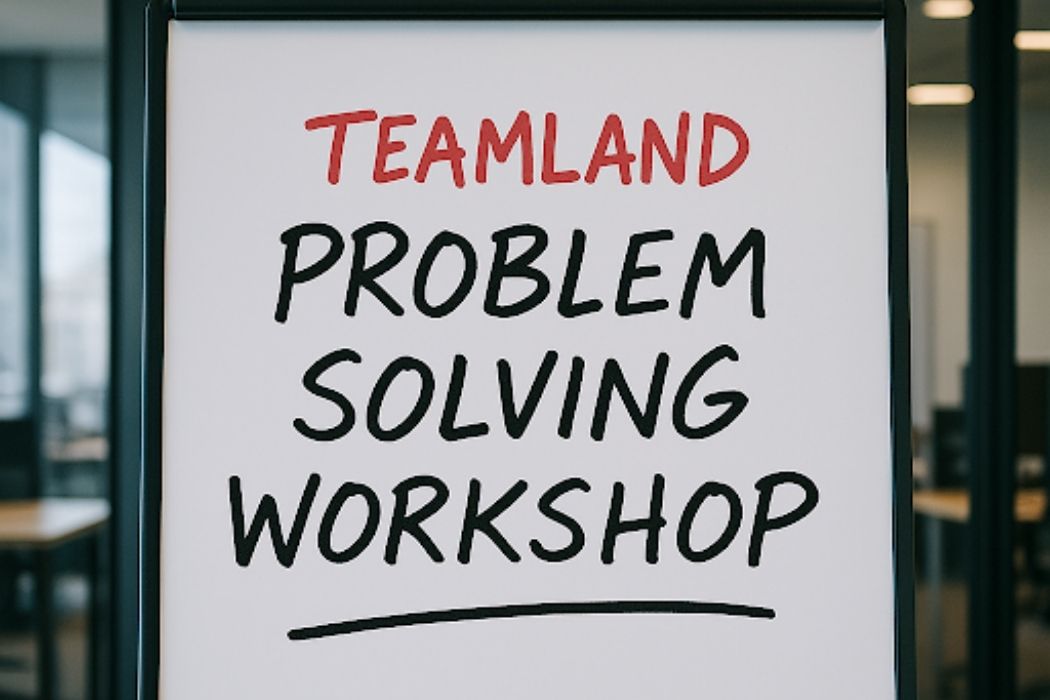Strategy 1: Prepare like a Pro, Not a Robot

Preparation is your best anxiety reducer and the first step to learn how to overcome the fear of speaking in public. But there’s a difference between over-memorizing and owning the message.
What Smart Prep Looks Like
- Build a one-page “spine.” Title, audience, problem, 3–5 points, one story/example, call-to-action. If you can explain the spine to a colleague in 60 seconds, you’re ready to rehearse.
- Design slides for clarity, not decoration. One message per slide. Big fonts. Minimal text. Use a simple template and consistent layout.
- Pre-answer the top five questions. What might the VP, the skeptic, the doer, the numbers person, and the time-keeper ask? Draft short answers now.
- Rehearse out loud, standing up. Reading silently does not count. You’re training breath, pacing, and transitions.
- Iterate quickly. Record a 5-minute rehearsal on your phone, watch it once, fix one thing, repeat. Tiny upgrades compound fast.
The “Practice Stack” (Use What You Need)
- Solo reps: Practice in front of your mirror, then capture this on your phone, and lastly rehearse in a vacant meeting room.
- Micro audience: Give one supportive colleague a demo and ask him or her two questions: what was evident, and what was long?
- Semi-live: Conduct a practice at team stand-up that has a hard five-minute limit.
Micro-drills (5–30 seconds each)
- Hook swap: Try three different opening lines; keep the one that feels natural.
- Breathe marks: Add “/ /” in your notes where you’ll pause and inhale.
- Name the next slide: Say the slide’s point before you reveal it.
- Last line first: Practice ending sentences cleanly, then add the lead-in.
Strategy 2: Calm the Body So the Mind Follows

Your body sets the tone. Tame the physical spike, and the thoughts quiet down.
A Tiny Breathing Toolkit
- 4-6 Breathing: Breathe in with the nose and breathe out at a leisurely pace with six long breaths. Do this 6 times, the longer breath stimulates your calm (parasympathetic) system.
- Box Breathing (4-4-4-4): Breath in, a four seconds count, breath out, a four seconds count, breathe in again, a four seconds count, and again, one more four seconds count. Meanwhile, repeat several cycles until you are presented.
- Reset Breath: And take a deep breath, as you breathe in through your nose, and a slow sigh, breathing out through your mouth. Available as a between slide breaker.
Pre-talk Ritual Menu (pick 2–3 and make them yours)
- Light movement: 2–3 minutes of brisk walking, shoulder rolls, or air squats to burn off adrenaline.
- Grounding: Ground yourself by standing with your feet hip-width apart and your knees soft; feel the floor, unclench your jaw, and drop your shoulders.
- Sips of water: Take small sips of water to steady your voice and create natural pauses.
- 30-second eyes-closed calm: Close your eyes for 30 seconds to breathe and visualize your first clear sentence, then open your eyes and smile.
In-the-moment Calmers
- Speak about ten percent slower than your natural pace; anxiety speeds you up, but your listeners prefer an unhurried delivery.
- Pause intentionally for about two seconds; it feels long to you, but it sounds perfectly normal to everyone else.
- Hold a pen or clicker still in your non-dominant hand to reduce fidgeting and keep your gestures purposeful.
- Use the room by shifting your stance at section breaks; deliberate movement helps bleed off nerves and signals transitions.
About “Quick Aids” (Use Thoughtfully)
Herbal tea, lozenges, or steadying music before you speak can help. Some professionals use performance-day beta-blockers with medical guidance. Whether you choose zero aids or a small assist, rely on skills first: breathing, pacing, and purposeful pauses.
Strategy 3: Reframe The Story In Your Head

You don’t have to feel fearless to sound confident. Replace unhelpful inner scripts with useful ones.
Simple Reframes That Work
- Replace “What if I mess up?” with “How can I help them today?” so your attention moves outward to serving the audience.
- Struggling with how not to be nervous for a presentation? Reframe “I’m nervous” as “I’m energized,” since the physiology is similar but the label is friendlier.
- Swap “This must be perfect” for “This must be useful,” because delivering value matters more than polish.
- Change “They’ll judge me” to “They’re on my side,” reminding yourself that most listeners want you to succeed.
Tiny Mindset Habits
- Write a two-line pep note, “I know this material. I care about this team,” and keep it on your first slide or cue card.
- Spend 30 seconds visualizing the room, your clear opening line, a nodding face in the audience, and a clean finish.
- Use a self-compassion script: “It’s normal to feel this. Breathe. One point at a time,” and repeat it whenever nerves spike.
- After you finish, debrief in writing with two wins and one tweak so you bank confidence and improve deliberately.
If your mind blanks
Pause. Breathe. Look at your spine or slide title. Say: “Let me restate that in a simpler way,” and continue. That’s not failure; that’s leadership.
Strategy 4: Build Confidence by Grading the Challenge

Confidence grows from reps. Design a staircase of speaking moments and climb it.
The Exposure Ladder
- Rung 1: Make one comment in every meeting to build the habit of speaking up.
- Rung 2: Give a 60-second update at the team stand-up to practice brevity and pacing.
- Rung 3: Present one slide at a team review to get comfortable being “on the spot.”
- Rung 4: Host a 10-minute share-out on a topic you know is cold to stretch your comfort zone.
- Rung 5: Run a 20-minute client or leadership update with Q&A to test your skills under light pressure.
Communities And Coaching
- Join a speaking group or a brown-bag internal series so that you can train conversationally in a roomy setting.
- Trade 10-minute practice slots with a colleague per week and provide each other with feedback on them in a clear and kind manner.
- Request your manager to give you low-stakes speaking so that the leaders like inspired volunteers.
- You can use a short course or coaching sprint in the event that you wish to increase your turnover and work on technique.
How To Keep Reps Gentle, Not Brutal
- Increase only one variable at a time (length, audience size, stakes, or interactivity).
- Speak on topics you genuinely care about; authenticity reduces strain.
- Celebrate completion, not perfection. Mark the win. Plan the next rung.
Strategy 5: Make It About Them (Audience-First Always)
Great speaking is audience service. When they’re your focus, your anxiety has less oxygen.
Know Your Crowd in 90 seconds
- Who’s here? Role, seniority, decision power.
- What do they want? Clarity, a decision, status, a plan, reassurance.
- What will help? One-page summary, timeline, cost, risk, next step.
Design For Their Brains
- Tell them where we’re going: “Three things today: context, options, decision.”
- Chunk it: Short sections with signposts—“First… Second… Finally…”
- Use plain language: “Here’s the bottom line…” beats jargon every time.
- Close with an action: “We need approval for X by Friday,” or “Next step: pilot with Team A.”
A Friendly 14-day Plan (Pin This Next To Your Screen)
Week 1: Foundations
- Day 1: Write your one-page spine for an upcoming talk.
- Day 2: Record a 3-minute rehearsal; fix one thing.
- Day 3: Breathing practice 5 minutes; add “/ /” pause marks to notes.
- Day 4: Deliver to a colleague; capture two wins, one tweak.
- Day 5: Slide cleanup; reduce text by 30%.
- Day 6: Full run-through standing; time it; remove one filler word.
- Day 7: Rest day; visualize success for 60 seconds.
Week 2: Reps and refinements
- Day 8: Run in the actual room or platform; check tech.
- Day 9: Practice with Q&A; script three likely questions.
- Day 10: Try a new opening hook; keep the strongest.
- Day 11: Practice pauses; count “one-two” in your head between points.
- Day 12: Deliver to two colleagues; ask, “What confused you?”
- Day 13: Edit for clarity; add a one-slide summary.
- Day 14: Light movement + breathing; deliver confidently.
Quick Troubleshooting Tips
This is a fast rescue kit that you can employ during a presentation when it takes a wrong turn, use the tip that aligns with the situation and keep going at it.
- If your voice shakes: Lower your volume, reduce your rate and increase your breath duration. You can drink some water to calm your voice down.
- If you speak too fast: Plant your feet, take a breath, and pause at each slide title to reset your rhythm.
- If questions derail you: Say, “Great question—let me finish this point, then we’ll unpack it,” and park it on a “Questions” slide.
- If the tech fails: Use your printed spine and one-page summary to talk through the message calmly; you will look poised and prepared.
- If you overthink the audience: Remind yourself that useful beats are perfect. Aim for clarity over applause and deliver one clear point at a time.
Common Blockers (And Friendly Fixes)
If you hit a bump while speaking, use these small moves to steady yourself and keep your message moving.
Shaky Hands Or Wobbly Voice
- Start with one short line you practiced: “Here’s the decision we need today.”
I Talk Too Fast
- Write “SLOW” at the top of your notes and mark “/ /” where you will pause.
- Use the slide title to slow down: look at it, breathe, say the title, then explain.
- Record a 60-second clip; aim for fewer words with more meaning.
I Ramble
- Use this pattern: state your point, give a quick example, restate the main point, then stop.
- If you start to wander, land it: “The main point is…”
- End each section with a quick recap: “That’s the risk, the cost, and the benefit.”
Q&A Throws Me Off
- Set it aside briefly: “I’ll cover that in two slides, then we’ll come back.”
- Narrow it: “Is your question about time or cost?”
- Don’t guess. Say, “I’ll confirm after this meeting,” and write it down.
A Gentle Word on Training
For some, short-term coaching with a professional can be helpful. If you’re curious, talk to a professional before the big day and test what you plan to use. Skills + support is a powerful combo; you decide what fits your values and context.
Teamland runs expert-led workshops and experiences that map directly to the skills you need: public speaking fundamentals, calm and confident delivery, audience-first messaging, and lots of safe practice reps.
We offer a dedicated Public Speaking program (taught by a two-time TEDx speaker), plus communication, influence, facilitation, and improv options that build confidence fast.
How Teamland Helps
1. Structured Practice, Not Guesswork
Public Speaking with Confidence deals with voice, body language, story telling and the use of visuals, therefore, you are not memorizing a slide, you are learning delivery. Pair that with Meeting & Workshop Facilitation to organize your message and run the room smoothly.
The Public Speaking Training experience is available as an ongoing class, which means you can stack repetitions (the best antidote to nerves).
2. Communication Mechanics That Reduce Nerves
Communication becomes clear and positive because of clear and cooperative communication at the workplace, so that there is no anxiety before speaking since you know what to say, how to say it. The training and communication of teamwork can enable you to get on the track and minimize friction, second-guessing, and understandable delivery.
3. Audience-First Influence
Business Communication & Influence teaches you to create messages that are easy to act on and reach a decision, ideal when you need to update leadership on current matters, make a presentation to a client, and need to ace critical decision-making meetings.
4. Low-Stakes Exposure To Speaking
Teamland frequently uses improv-style exercises in offsites and activities; improv builds spontaneity and comfort thinking on your feet, exactly what anxious speakers need.
Our blog also outlines a Public Speaking Confidence Challenge, a workshop format designed to help people overcome fear through practice plus practical techniques.
5. Leadership Alignment & Culture Support
If you want senior leaders modeling calm communication, Teamland can facilitate leadership sessions/offsites and alignment workshops, useful when you’re trying to normalize speaking practice across a team or org.
Final Word
Confidence isn’t magic; it’s repetition plus tiny upgrades done on purpose. Keep it human.Keep it simple. Strike on one, then another, and have your pauses hit some of the hard work. As your brain says uh-oh, smile, have a little breath longer than the one you just took, and say your first line. The rest has a way of following once momentum shows up.
If you want a faster path, we can walk it with you. We’ll help you build a simple message spine, practice calm breathing you can use in real time, and shape audience-first stories that drive decisions. You’ll get practical coaching, safe reps, and recovery lines for the inevitable curveballs, tech glitches, blank moments, tough questions, so you feel steady instead of stuck.
And you are ready to turn stage freight into a win? Give us information about your team, your schedules, and wins over the coming month. We will compile the right-sized plan which includes the sessions, practice reps, and coaching.
Reach out to Teamland to start the conversation, or ask for a quick discovery call so we can tailor a proposal and, if you’d like, set up a pilot session.
Let’s get your people speaking with clarity, calm, and real confidence.
FAQs
What causes fear of public speaking?
Public speaking is perceived by your brain as a social risk. That may cause a threat reaction: elevated pulse, trembling fingers, dry mouth. Such factors as fear of speaking in public, negative judgment, perfectionism, high stakes, lack of practice, bad experiences in the past, and not knowing how to use the rooms or technology are common drivers.
How to stop being nervous when talking?
First, calm the body and then calm the mind. Breathing: 4-6, an inhalation should be four seconds, followed by a six-second exhalation. Stand with feet hip-width apart, relax your shoulders, and take small sips of water. Speak about ten percent slower than your instinct. Pause for two seconds between ideas. Focus on helping one person in the room. Remind yourself that useful beats perfect.
How to overcome stage fright?
Prepare a one page spine with your goal, three points, and a clear ask. Practice out loud and record short run throughs, then fix one thing at a time. Build an exposure ladder: one comment in meetings, a one minute update, one slide, then longer talks. Visualize a clean opening and a calm close. Join a practice group if you can. Expect some nerves and treat them as energy you can use.
What should I do five minutes before I speak?
Run a simple routine. Loosen your shoulders and jaw. Take six cycles of 4–6 breathing. Visualize your first sentence and the first slide. Check your mic, timer, and clicker. Place water within reach. Recall one friendly face. Smile. You are ready.
How to overcome fear of public speaking?
You overcome the fear of public speaking by combining preparation with practice and mindset shifts. Start by planning your key points and rehearsing them out loud so you feel more in control. Calm your body with slow breathing, speak a little slower than usual, and use short pauses to steady yourself. Focus on the audience and how you can help them instead of worrying about being judged.







